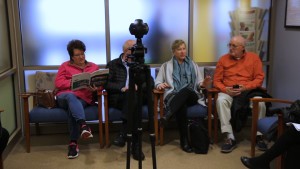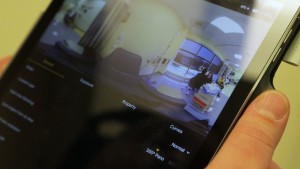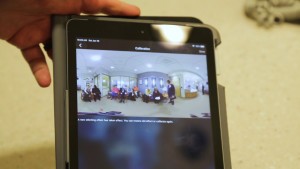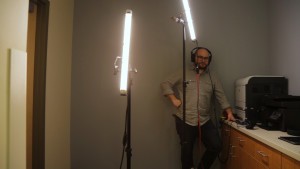
And Now It’s Virtual Insanity
February 14th, 2019
Like all burgeoning video technology, the early days of VR is essentially still happening and full of untested variables. There are 100 different 360° cameras with 200 different stitching algorithms and 245 different post-production workflows (for both video AND audio). While consistency and methodology vary, the most important component is scoping out what the client needs first and then work in parallel to make sure you can execute that vision.

It’s more a question of narrative vs. tech. VR is a little less forgiving than “traditional” video in that you are basically filming a theater-in-the-round rather than a fixed field of view. You need to hide lights, mics, crew, and any other production gear you would normally sit behind the camera in order to tell the story. You need to be aware of room tone so you capture the ambisonic audio authentically (full-sphere sound above and below the listener). Stitch points from all the camera lenses have to be calibrated and aimed correctly before you start rolling. All these factors need to be figured out and tested well before Day 1 of shooting. You can erase some things in post, but in the world of true cinéma vérité there are no shortcuts.
Knowing all this is even more essential when it comes to subject matter. One of our newest clients, a large healthcare provider in the region, needed a series of videos that immersed incoming patients in one of the facilities where they would be spending hours hooked up to medical equipment and surrounded by unfamiliar sounds & faces. We had to put ourselves into the mindset of a nervous individual who doesn’t even know what the chairs will look like in the room. Weeks prior, as we walked the spaces during pre-prod, we figured out basic questions that needed to be answered like, “What’s behind that big door in the waiting room?” “Why is that computer thing over there making that noise?” “What is this bag of fluid they are hooking up to my body?” It may seem trivial, but these details add up to an experience. Plus, this is also one of the few instances where sitting through a video longer than a couple of minutes actually INCREASES engagement.
One of the best moments was when we as producers realized our client really understood from the beginning that VR can take the time to address basic but essential questions, especially in an immersive environment where the user can look around and take a moment to hear the ambient reverberations of doors opening, beeping, talking, air conditioning, etc. You wouldn’t think hearing a mundane air vent above you or watching a conversation behind you would be interesting, but imagine setting down on a planet surface you have never seen and suddenly experience an alien atmosphere for the first time.
We then sat down with our client and talked about every scenario a patient would endure during the process – including just sitting in the waiting room with other patients. We mapped out a technical set plan for each individual room, talked about hospital resource allocations and casting, then set shoot dates with our crew, our 6K-resolution VR camera (plus ambisonic & standard audio gear), and versatile LED lighting rigs. We also finalized an aggressive post-production schedule (of which can take a longer than standard 2D video).


Life is exciting and weird. It’s also scary and unknowable. So if it takes putting on an Oculus headset to experience something new – and it lowers blood pressure and feelings of doubt – then VR video is a powerful tool. In fact, online traffic of virtual reality and augmented reality (think Pokémon GO) will increase 12-fold between 2017 and 2022 globally. What we produced for that health care provider is more of a closed system to start; meaning patients will be guided in-person by a VR nurse navigator at the facility as they use the Oculus system. But thanks to platforms like YouTube and Vimeo supporting 360° video content those videos will make their way online for family members to experience on an empathetic and educational level.

The buy-in for VR video production is not the cheapest. But the magnitude of ROI is huge for both for-profit AND non-profit sectors. Sure, part of the lure is the newness factor, but if you partner with the right production company who can act as a partner and not a vendor – and you see a need in your industry – then you’ll be leveraging one of the coolest, most powerful communication tools out there for an experience that is visceral, important, and memorable.
We’ve invested in the technology so we can invest in our clients.

